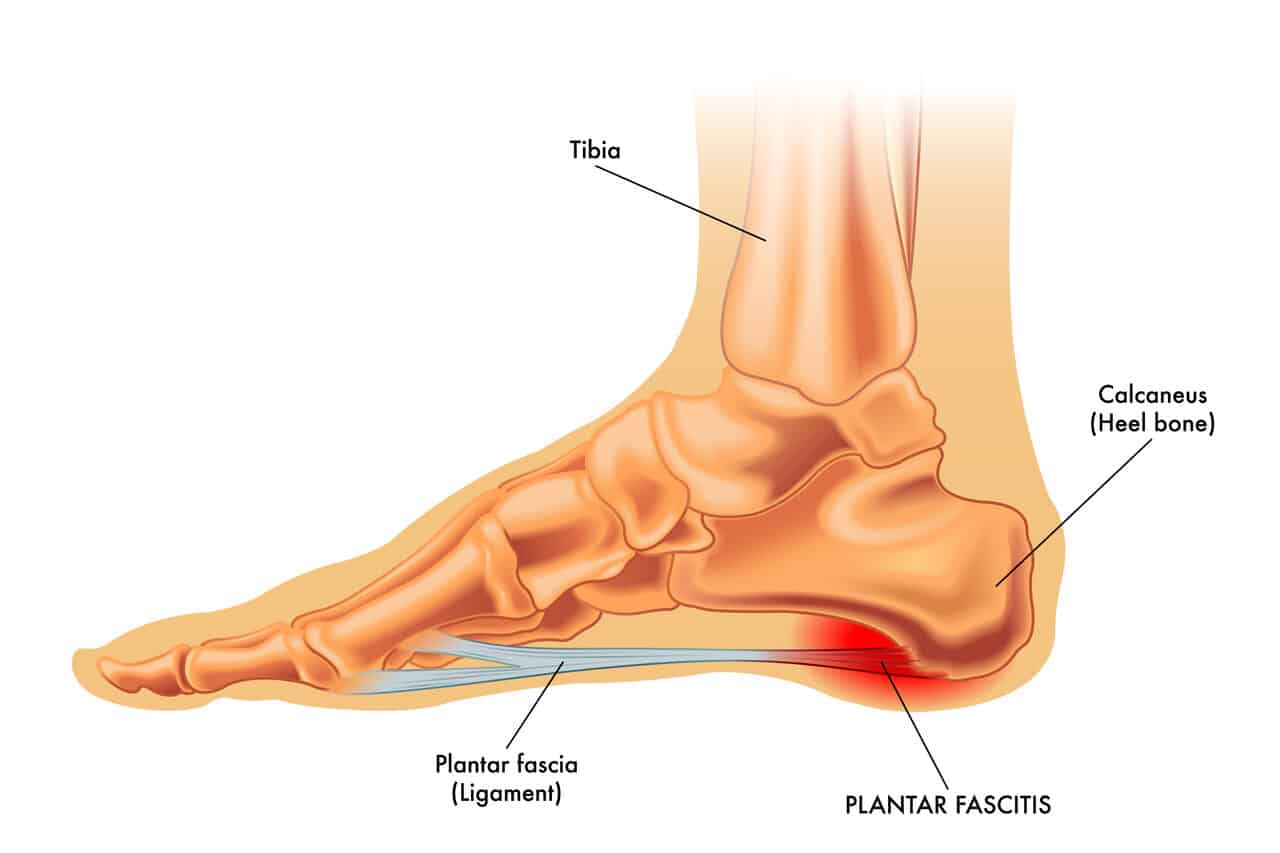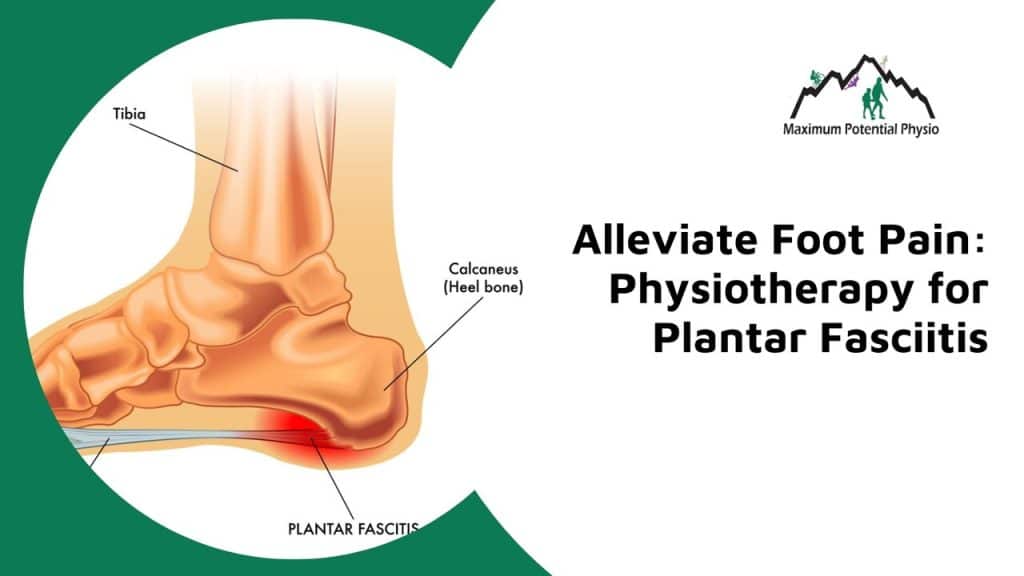Alleviate Foot Pain: Physiotherapy for Plantar Fasciitis

Plantar fasciitis is a common and often debilitating condition that affects the heel and bottom of the foot. It can cause significant pain, especially with the first steps taken in the morning or after periods of inactivity. Understanding the nature of plantar fasciitis, its causes, and the most effective treatments is essential for those looking to manage and overcome this condition. In this blog, we will explore how physiotherapy can help treat plantar fasciitis, and what specific exercises and lifestyle changes can support recovery and long-term health.
What is Plantar Fasciitis?
Plantar fasciitis is a common condition that causes pain in the heel and bottom of the foot. It occurs when the plantar fascia, a thick band of tissue that runs across the bottom of the foot and connects the heel bone to the toes, becomes inflamed.
This inflammation is usually due to overuse or repetitive strain, leading to small tears in the tissue. The pain is often sharp and most intense with the first steps taken in the morning or after long periods of rest.
Plantar fasciitis can affect anyone but is most commonly seen in runners, individuals who are overweight, and those who wear shoes with inadequate support.
Physiotherapy for Plantar Fasciitis Explained
Physiotherapy plays a crucial role in managing and alleviating the symptoms of plantar fasciitis. A physiotherapist can develop a personalized treatment plan that addresses the root causes of the condition, aiming to reduce pain, improve function, and prevent recurrence. The treatment plan typically includes:
- Manual Therapy: Techniques to reduce inflammation and promote healing by improving blood flow to the affected area.
- Stretching Exercises: Targeting the plantar fascia, Achilles tendon, and calf muscles to increase flexibility and reduce tension.
- Strengthening Exercises: Focusing on the muscles of the foot and lower leg to improve support and stability.
- Education: Guidance on proper footwear and activity modification to prevent further strain on the plantar fascia.
Physiotherapy Exercises for Plantar Fasciitis
Several exercises are particularly effective in treating plantar fasciitis. These exercises help to stretch and strengthen the muscles and tissues in the foot and lower leg, providing relief from pain and preventing future occurrences.
- Towel Stretch: Sit with your legs extended in front of you. Place a towel around the ball of your foot and gently pull the towel towards you while keeping your knee straight. Hold the stretch for 15-30 seconds and repeat 2-3 times.
- Calf Stretch: Stand facing a wall with your hands on the wall at shoulder height. Step one foot back, keeping it straight and pressing the heel into the ground. Bend the front knee and lean towards the wall until you feel a stretch in the back leg’s calf. Hold for 15-30 seconds and repeat 2-3 times on each leg.
- Marble Pickups: Place a handful of marbles on the floor and use your toes to pick them up one at a time and place them in a bowl. This exercise strengthens the intrinsic muscles of the foot.
- Toe Towel Curls: Place a towel on the floor and use your toes to scrunch it up towards you. This exercise helps to strengthen the muscles on the bottom of your foot.
How Long Does It Take to See Results from Physiotherapy?
The time it takes to see results from physiotherapy for plantar fasciitis varies depending on the severity of the condition, the individual’s adherence to the treatment plan, and their overall health.
Typically, individuals begin to notice improvements within a few weeks of starting physiotherapy. For mild to moderate cases, significant relief can often be achieved within 6 to 8 weeks. In severe or chronic cases, the treatment period may span several months. Consistent attendance at physiotherapy sessions and diligent performance of prescribed exercises and stretches are crucial for achieving the best outcomes. Regular follow-up with the physiotherapist ensures that the treatment plan can be adjusted as needed to maximize progress and address any ongoing issues.
Lifestyle Changes to Help Manage and Prevent Plantar Fasciitis
In addition to physiotherapy, several lifestyle changes can help manage and prevent plantar fasciitis.
- Maintain a Healthy Weight: Excess body weight puts additional stress on the plantar fascia.
- Engage in Low-Impact Exercises: Activities such as swimming or cycling can help maintain fitness without exacerbating the condition.
- Regular Stretching: Incorporate routines for the calf muscles, Achilles tendon, and plantar fascia to improve flexibility and reduce tension.
- Avoid Prolonged Standing or Walking on Hard Surfaces: Take breaks and rest the feet when necessary.
By making these lifestyle changes, individuals can support their physiotherapy treatment and reduce the risk of future flare-ups.
Managing Plantar Fasciitis: Choosing the Right Footwear
Choosing the right footwear is essential for managing and preventing plantar fasciitis.
- Arch Support: Shoes with adequate arch support help distribute pressure evenly across the foot, reducing stress on the plantar fascia.
- Cushioning: Proper cushioning in the heel and midsole absorbs shock and reduces impact when walking or running, protecting the plantar fascia from excessive stress.
- Proper Fit: Shoes should fit well and provide enough room for the toes to move comfortably. Avoid shoes that are too tight or too loose.
- Heel Stability: Shoes with a firm heel counter provide stability and support to the heel, reducing excessive movement and strain on the plantar fascia.
- Avoid High Heels and Flat Shoes: High heels place excessive pressure on the forefoot, while flat shoes lack the necessary arch support and cushioning. Opt for shoes with a moderate heel and good arch support to maintain proper foot mechanics.
By selecting appropriate footwear, individuals can significantly reduce the strain on their plantar fascia, aiding in the recovery process and preventing future episodes of plantar fasciitis.
Confidence in Every Step
Plantar fasciitis can be a painful and persistent condition, but with the right approach, it is manageable and treatable. Physiotherapy offers a comprehensive solution, addressing the underlying causes and providing effective relief through targeted exercises, manual therapy, and lifestyle modifications.
If you're struggling with heel pain or suspect you might have plantar fasciitis, consulting with a qualified physiotherapist at Maximum Potential Physiotherapy in Calgary NW can help you regain your mobility and quality of life. Contact us today to optimize your foot health.

